In the ever-evolving world of event planning, finding ways to maximize revenue, enhance attendee experiences, and boost your brand presence is essential. Utilizing social media and digital marketing as a strategic approach to promote events and attract sponsors can significantly enhance brand visibility and create compelling sponsorship packages that resonate with potential sponsors.
One of the most effective ways to do this is by selling merchandise onsite at your event. Whether it’s a conference, concert, festival, or sporting event, offering exclusive event merchandise not only creates a memorable experience for your guests but also brings numerous financial and marketing benefits.
Creating memorable experiences through unique and high-quality promotional items can make a lasting impression on attendees and foster customer loyalty. Here are some key reasons to sell merchandise onsite at your event.
What is Onsite Merchandise Sales?
Onsite merchandise sales refer to the practice of selling branded items, such as t-shirts, hats, or souvenirs, directly to attendees at an event. This strategy allows event organizers to capitalize on the excitement and enthusiasm generated during the event, turning it into a lucrative revenue stream.
Definition and benefits of selling merchandise onsite
For event organizers, selling merchandise onsite is a win-win situation. It not only provides an additional revenue stream but also serves as a powerful tool for promoting the event brand. Attendees, on the other hand, gain a unique and memorable way to commemorate their experience. These tangible items often hold sentimental value, reminding them of the enjoyable moments they had. Moreover, onsite merchandise sales can foster a sense of community and shared identity among attendees, enhancing the overall event experience.
1. Boosts Revenue through Event Marketing
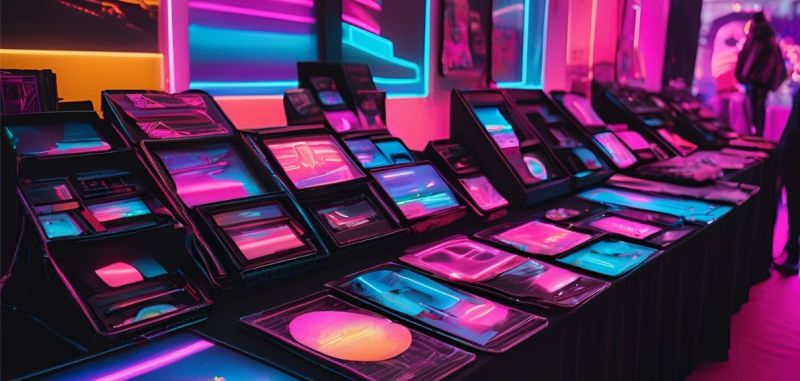
Selling event merchandise is a surefire way to increase revenue. With the right mix of products—t-shirts, hats, mugs, posters, and other items—event attendees can enhance their engagement and overall experience, making merchandise sales a significant income stream.
Incorporating event management technology can further enhance the process of selling merchandise onsite and improve attendee experiences by streamlining transactions and offering personalized options.
Depending on your event’s size, these sales could be in the thousands, and when priced strategically, they can provide excellent margins. Fans and attendees are often eager to purchase souvenirs as a way of remembering their experience, so giving them the opportunity to buy event-related merchandise on-site can be highly profitable.
2. Enhances the Event Experience
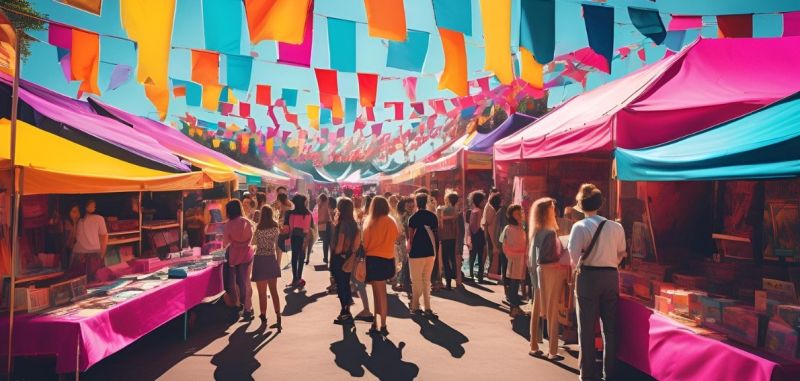
People love taking home something tangible to remember an event by. Custom merchandise is an effective tool for enhancing brand visibility and engagement at events. Merchandise often holds sentimental value and serves as a reminder of the positive experience they had.
Integrating paid ads into your advertising strategy can significantly drive traffic to your event, thereby increasing merchandise sales and overall event visibility.
When attendees purchase event merchandise, they not only get a physical item but also feel a deeper connection to the event itself. Whether it’s a band tee from a concert, a commemorative hoodie from a sports event, or a branded conference notebook, these items become keepsakes that help cement the memories created at your event.
Additionally, having merchandise stalls onsite adds an element of excitement and activity, which enhances the overall event experience. Attendees can browse through exclusive, limited-edition items that they can’t get anywhere else, making the event feel more special.
3. Increases Brand Visibility with Branded Merchandise
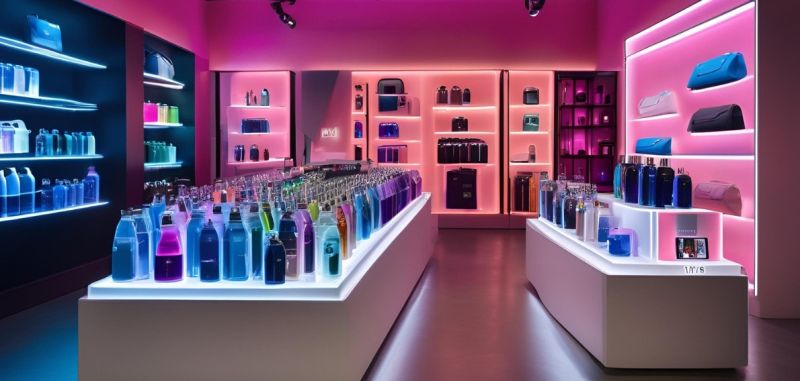
Event merchandise, including well-chosen promotional items, often acts as walking advertising. When attendees wear or use your event gear after the event, they become ambassadors for your brand. This kind of organic, post-event marketing helps extend the reach of your event far beyond the venue. Merchandise featuring your event’s logo, theme, or performers spreads the word wherever it goes. It’s free marketing that continues well after the event is over.
In addition, leveraging event technology can significantly enhance attendee engagement and streamline logistics, making the overall event experience more seamless and enjoyable.
Moreover, when attendees share photos on social media, especially when they’re wearing or showcasing your event’s merchandise, it further boosts your visibility. This viral promotion can generate buzz and attract future attendees, all while creating a sense of community around your event.
4. Fosters a Sense of Community
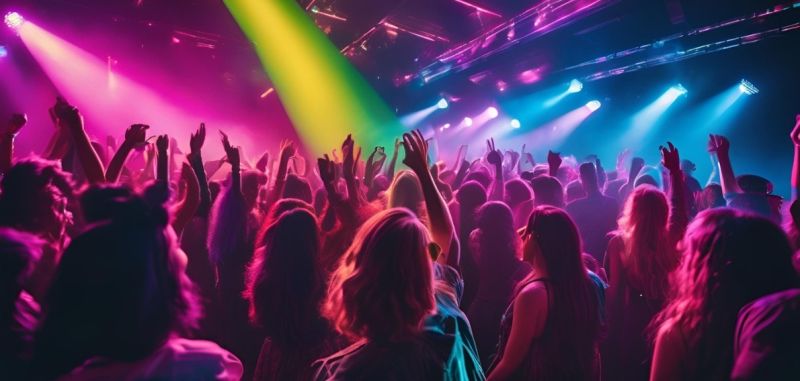
Selling event merchandise can create a stronger sense of community among attendees. Corporate events also benefit from branded merchandise, enhancing visibility and fostering customer loyalty during these gatherings. It’s a way for people to show that they were a part of something special. When attendees wear the same branded merchandise, it forms a bond between them.
Event professionals affirm that face-to-face interactions are critical in enhancing sales and fostering networking opportunities, emphasizing the importance of planning these events to optimize networking, which is essential for achieving business objectives.
This is especially true in fan-driven events like music festivals, conventions, or sports games, where fans feel an emotional connection to the event. Wearing or using event merchandise helps attendees identify with one another and can lead to a deeper sense of belonging, even after the event concludes.
Merchandise can also create a sense of exclusivity, especially if limited-edition items are offered. Attendees feel like they are part of a select group, heightening their emotional connection to the event.
5. Offers More Opportunities for Customization
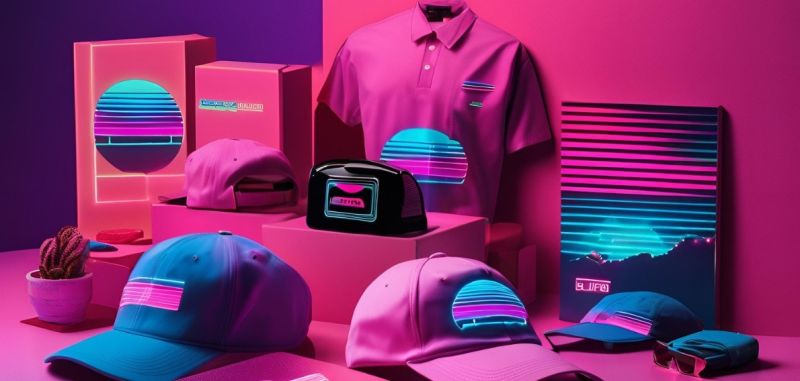
Selling merchandise onsite also gives you the chance to offer customized or personalized items. Trade shows are excellent opportunities to showcase such customized merchandise, helping you stand out and engage with potential clients and vendors. For example, you could offer customers the ability to add their name or the event date to a t-shirt or hoodie. This personalization adds value and makes the item even more meaningful to attendees. This can also be a premium offering that allows you to generate even more revenue.
Evaluating the effectiveness of in-person selling during events is crucial. Conducting a sales postmortem after a pop-up shop or trade show can help assess whether in-person selling meets specific goals and KPIs.
Customization can also take the form of offering unique, event-themed products that aren’t available online or before the event. This kind of exclusivity can spark excitement and increase demand, encouraging attendees to purchase items that will only be available for a limited time.
6. Improves Post-Event Engagement with Event Attendees

Creating memorable experiences is key to ensuring that the connection between your attendees and your event doesn’t end when they leave. Merchandise extends the life of the event in the minds of attendees.
According to the Event Technology Engagement Study, live events significantly boost sales and networking opportunities by facilitating critical face-to-face interactions.
When they wear or use their merchandise long after the event has passed, they continue to engage with your brand and remember their experience. It keeps your event in their thoughts and conversations, making it more likely that they’ll return for future events or recommend it to others.
7. Strengthens Sponsorship and Partnership Opportunities
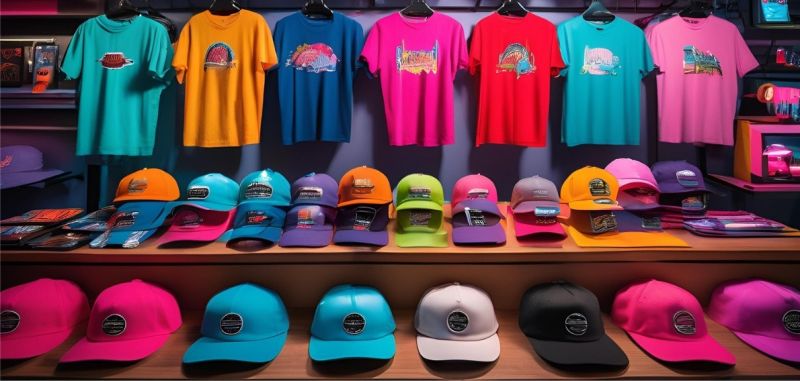
Selling event merchandise can also open doors to new sponsorship and partnership opportunities. Custom merchandise can significantly enhance brand visibility and engagement at events. Sponsors may be interested in providing branded merchandise for your event or collaborating on co-branded items. These partnerships can offset the cost of producing and selling merchandise, and help create a mutually beneficial relationship that drives revenue and adds value to your event.
Collaborating with local businesses can further enhance marketing efforts for events, especially pop-ups. These partnerships can lead to mutually beneficial promotions and amplified word-of-mouth marketing, ultimately expanding the reach and customer base of the events.
Moreover, your sponsors’ logos and branding on merchandise are an additional form of advertising that benefits them as well as your event.
8. Increases the Perceived Value of the Event

Offering promotional items can elevate the perceived value of the event. It creates the impression that the event is professional, organized, and well thought out. High-quality merchandise and exclusive items can make your event feel more premium, leading attendees to view it as something special.
The event venue plays a crucial role in determining ticket sales strategies and enhancing attendance. Different pricing structures, such as tiered pricing based on venue sections and group discounts, can significantly impact revenue generation.
The availability of these items, especially when paired with a unique or limited-edition offering, can boost the overall prestige of your event.
Identifying Your Target Audience in Event Planning
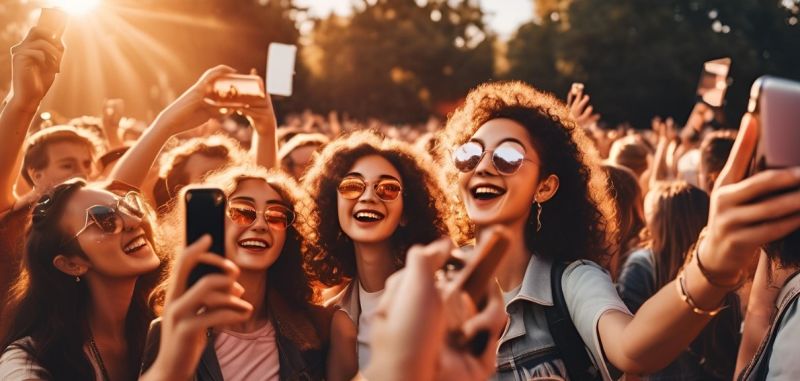
Identifying your target audience is crucial for effective event marketing. Understanding who your attendees are, what they are interested in, and what they value will help you tailor your event marketing strategies to meet their needs. Here are some tips for identifying your target audience:
- Conduct Market Research: Use surveys, focus groups, and online analytics to gather data about your potential attendees. This will provide insights into their preferences, behaviors, and expectations.
- Analyze Past Events: Look at attendance numbers, demographics, and feedback from previous events to identify trends and patterns. This historical data can help you understand what worked well and what needs improvement.
- Create Buyer Personas: Develop detailed profiles of your ideal attendees, including their interests, behaviors, and pain points. These personas will guide your marketing efforts and ensure you are targeting the right audience.
- Use Social Media: Analyze your social media followers and engagement metrics to understand who is interacting with your brand. Social media platforms offer valuable data on your audience’s demographics and interests.
By understanding your target audience, you can create event marketing strategies that resonate with them and increase brand visibility. Tailoring your approach to meet their needs will not only enhance their experience but also boost your event’s success.
Effective Event Marketing Strategies for Merchandise Sales
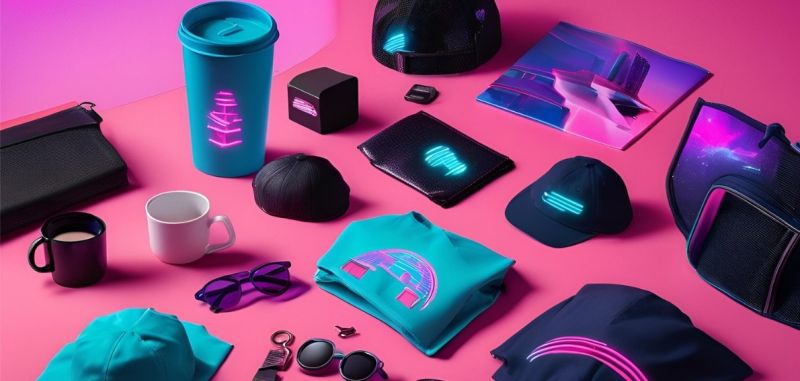
Effective event marketing strategies can help drive merchandise sales and increase brand visibility. Here are some strategies to consider:
- Offer Exclusive Merchandise: Create limited-edition merchandise that is only available at the event to create a sense of urgency and exclusivity. Attendees will be more likely to purchase items they can’t get anywhere else.
- Use Social Media: Promote your merchandise on social media to create buzz and drive sales. Share sneak peeks, behind-the-scenes content, and special offers to engage your audience and encourage them to buy.
- Offer Discounts: Offer discounts or promotions to attendees who purchase merchandise during the event. Limited-time offers can incentivize attendees to make a purchase on the spot.
- Create a Merchandise Pack: Offer a bundle of merchandise items at a discounted price to incentivize attendees to purchase more. A merchandise pack can include items like a branded mug, t-shirt, and tote bag, providing great value for attendees.
- Use Branded Mugs and Other Promotional Gifts: Offer branded mugs, pens, and other promotional gifts to attendees to create a lasting impression. These items can serve as daily reminders of your event and brand.
Pop-up stores are another effective strategy, creating unique marketing opportunities and enhancing brand strategy. They can help offload older inventory, foster customer interaction, and adapt to seasonal trends.
By implementing these strategies, you can increase merchandise sales and create a memorable experience for your attendees. Effective event marketing strategies not only boost revenue but also enhance brand visibility and engagement.
Choosing the Right Merchandise for Your Event
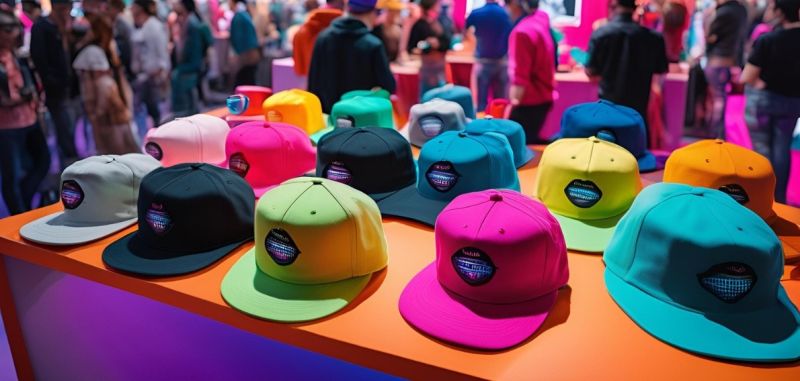
Choosing the right merchandise for your event is crucial for creating a memorable experience for your attendees. Here are some tips for choosing the right merchandise:
- Consider Your Target Audience: Choose merchandise that resonates with your target audience and aligns with their interests. Understanding what your attendees value will help you select items that they will appreciate and use.
- Keep It Simple: Choose merchandise that is simple, yet effective, such as branded apparel or promotional gifts. Items like printed apparel, branded mugs, and tote bags are always popular and practical.
- Consider the Event Type: Choose merchandise that is relevant to the event type, such as trade show merchandise or corporate event merchandise. Tailoring your merchandise to the event will make it more meaningful for attendees.
- Use High-Quality Materials: Choose merchandise that is made from high-quality materials to ensure it lasts and creates a positive impression. High-quality items reflect well on your brand and are more likely to be used and appreciated by attendees.
- Offer Variety: Offer a variety of merchandise items to cater to different tastes and preferences. Providing a range of options, from promotional gadgets to printed apparel, ensures there is something for everyone.
Utilizing an online store for pre-event and post-event sales can create an additional revenue stream and ensure that customers unable to attend still have access to the products.
By choosing the right merchandise, you can create a memorable experience for your attendees and increase brand visibility. Thoughtfully selected event merchandise not only enhances the attendee experience but also serves as a powerful marketing tool long after the event concludes.
Measuring Success and ROI
Measuring the success of onsite merchandise sales is crucial for understanding its impact on event revenue and overall monetization. By tracking sales data and analyzing customer behavior, event organizers can gain valuable insights into what works and what doesn’t, allowing them to refine their strategies for future events.
Measure the success of onsite merchandise sales
To effectively measure the success of onsite merchandise sales, event organizers should track several key metrics:
- Total Sales Revenue: The overall income generated from merchandise sales.
- Average Transaction Value: The average amount spent by each customer.
- Number of Items Sold: The total quantity of merchandise items sold.
- Top-Selling Items: The most popular products among attendees.
- Customer Demographics and Behavior: Insights into who is buying the merchandise and their purchasing patterns.
By analyzing these metrics, event organizers can identify areas for improvement and optimize their merchandise sales strategy for future events.
Analyze data to boost event revenue and monetization
Leveraging data from onsite merchandise sales allows event organizers to gain a deeper understanding of their target audience. This data-driven approach can significantly boost event revenue and monetization by:
- Identifying High-Demand Items: Stocking up on popular products to meet attendee demand.
- Targeting Specific Demographics: Crafting tailored marketing campaigns to reach specific audience segments.
- Optimizing Pricing and Promotions: Adjusting prices and offering promotions to maximize sales.
- Enhancing Attendee Experience: Offering personalized merchandise that resonates with attendees.
By utilizing data and analytics, event organizers can unlock new revenue streams and create a more engaging and memorable experience for their attendees, ensuring the success of their next event.
Conclusion
Incorporating merchandise sales into your event planning isn’t just about increasing revenue—it’s about providing a more complete, memorable, and engaging experience for your event attendees.
A successful event hinges on meticulous planning and effective budget management. Merchandise gives fans a way to hold on to their memories, spreads your brand far and wide, fosters community, and can help improve your event’s overall success. By offering exclusive, high-quality items that resonate with your audience, your event can continue to generate buzz long after the last attendee leaves.
So, whether you’re hosting a music festival, sporting event, or professional conference, don’t overlook the power of onsite merchandise sales—it’s a win-win for both your bottom line and your attendees’ experience.
Frequently Asked Questions
Why should event organizers consider selling merchandise onsite?
Selling merchandise onsite offers multiple benefits for event organizers. It creates a significant additional revenue stream through strategic pricing of items like t-shirts, hats, and mugs. Beyond financial gains, merchandise enhances the overall event experience by providing attendees with tangible memories and exclusive items they can’t get elsewhere.
It serves as walking advertising when attendees wear or use the items after the event, extending brand visibility. Additionally, merchandise sales can create opportunities for sponsorships and partnerships, offsetting production costs while adding value to the event through co-branded items.
How does merchandise contribute to community building and brand engagement?
Merchandise plays a crucial role in fostering community and brand engagement by creating a shared identity among attendees. When people wear the same branded items, it creates a bond and sense of belonging, particularly effective in fan-driven events like music festivals or sports games. Limited-edition items can create exclusivity, strengthening emotional connections to the event.
The impact continues post-event as attendees use their merchandise, keeping the event in their thoughts and conversations. This ongoing engagement increases the likelihood of return attendance and word-of-mouth recommendations, while social media shares of branded items amplify visibility.
What strategies should be used to maximize merchandise sales at events?
Successful merchandise sales rely on a combination of strategic approaches. Creating exclusive, limited-edition items available only at the event generates urgency and demand. Social media promotion before and during the event can create buzz through sneak peeks and behind-the-scenes content.
Offering special discounts, bundle packages, and time-limited promotions during the event encourages immediate purchases. High-quality materials and thoughtful design choices are essential, as they reflect on the brand’s value. Additionally, understanding the target audience through market research and previous event data helps in selecting merchandise that resonates with attendees.
What types of merchandise should events offer, and how should they be selected?
Event merchandise selection should be carefully curated based on several factors. Consider the target audience’s preferences and the event type when choosing items – what works for a corporate conference may differ from a music festival. Essential items typically include branded apparel, mugs, and practical items like tote bags.
Offering customization options adds value and justifies premium pricing. The merchandise range should include various price points to accommodate different budgets. Quality is crucial – using superior materials ensures items last longer, creating positive brand associations and encouraging long-term use.
You May Also Like:
Music Festival Merchandise Guide: The Ultimate Way to Boost Your Sales and Fan Engagement
OnGround Event Technology For Music Concerts to Know About in 2025
Anti Scalping for Event Management: Why These Measures Are Essential – A Complete Guide


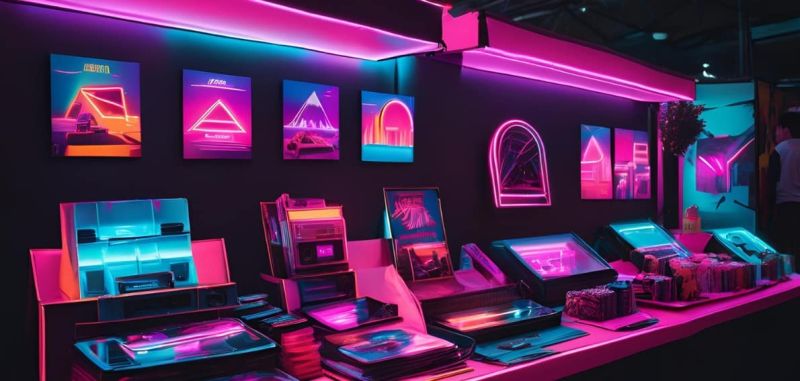
 16th April 2025
16th April 2025